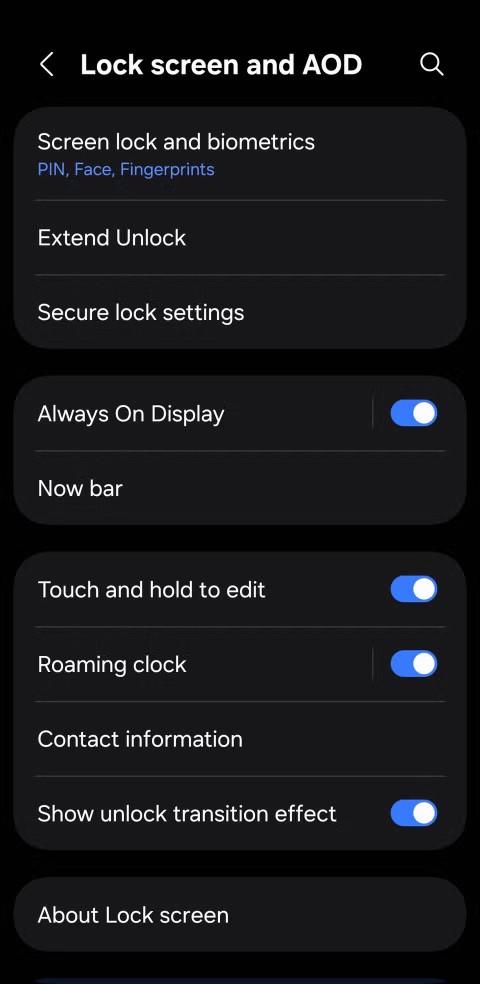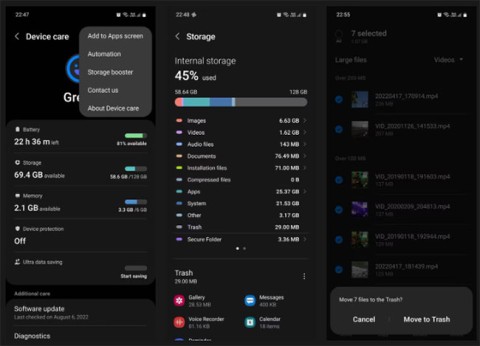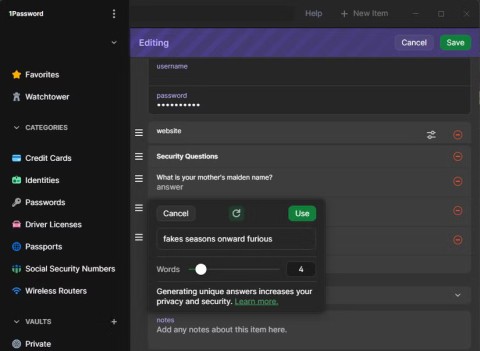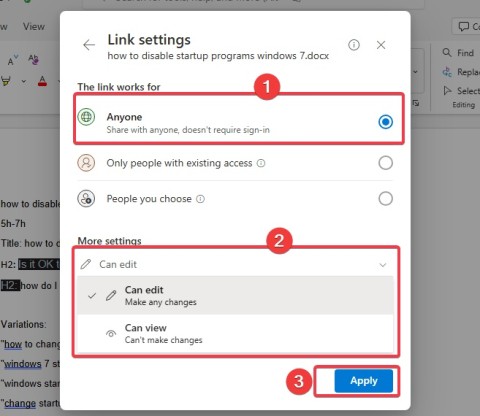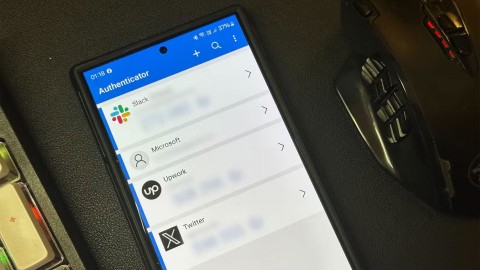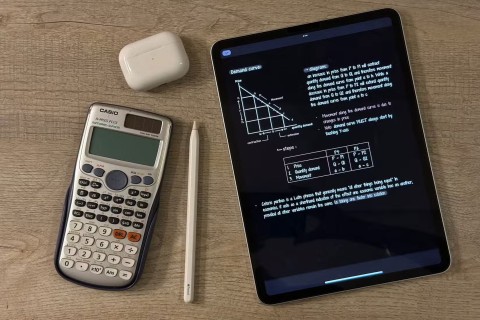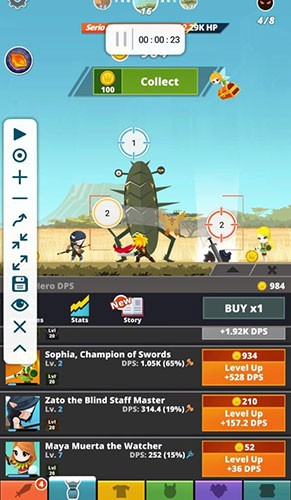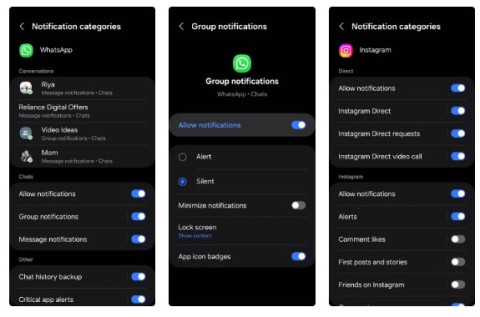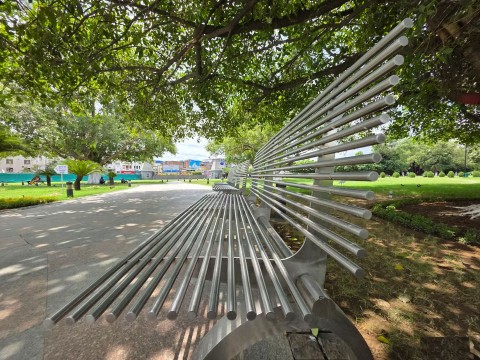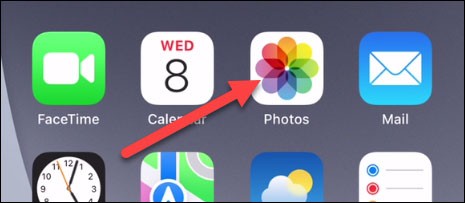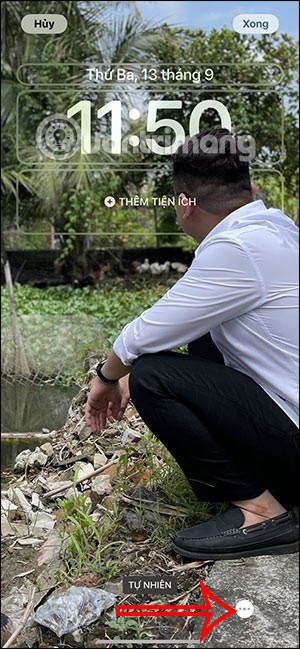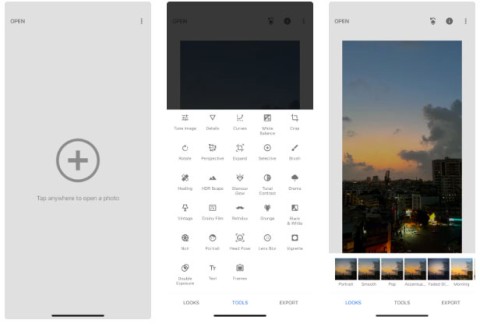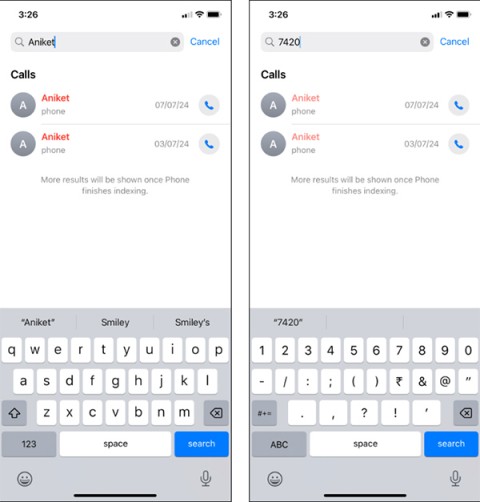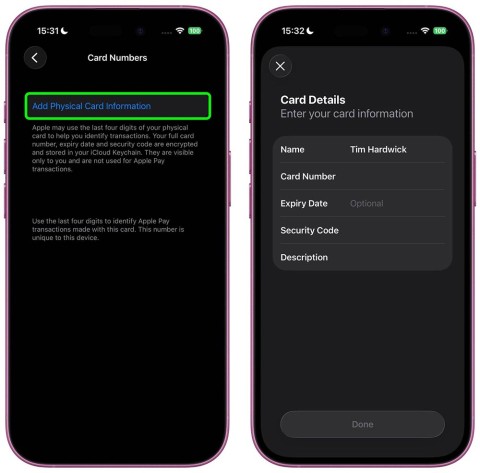Instructions to turn videos into beautiful wallpapers on Android phones

Are you bored with static wallpapers on your phone? Try this method of turning videos into beautiful wallpapers for Android.
Taking a screenshot of your smartphone is an essential part of using a smartphone. If you find something interesting while browsing Facebook , Youtube , TikTok or other social media apps . But if you have just switched from iPhone to Android, you may not know how to take a screenshot on Android.
The thing is, Android is used by a lot of different smartphone manufacturers as the operating system for their phones. And they often have different features that make their devices unique.
Also, the way to take a screenshot can vary between Android smartphones. For example, if you’re using a Samsung Galaxy Ultra with an S Pen, you can take it out and tap the Air command menu, then tap Screen write to take a screenshot. If you want to see some more detailed screenshot tips for different models and different ways to take a screenshot, scroll down below.
If you want to record Android screen video, read this article: Quality Android screen video recording applications
Table of Contents
The traditional way to take a screenshot on many Android smartphones today is to simply press and hold the power button and the volume down button at the same time. If you see the screen flash and the screenshot is recorded, then you have taken a screenshot.
This screenshot method will work on most current Android devices, including Samsung, Xiaomi, Oppo, Huawei, Vivo smartphones...

The time it takes to take a screenshot with these buttons can vary, for example with some smartphones you can take a screenshot by pressing and releasing these two buttons quickly together. But some models require you to hold the buttons together for 1 second or more to take a screenshot.
Of course, if you can take a screenshot, you will see a notification that you have successfully taken a screenshot, along with the sound of the screenshot.
Another way to take a screenshot of your Android device using the power button is to simply press and hold the power button until you see a menu appear with options like Restart, Power off and Take a screenshot . Now you just need to select the Take a screenshot option.
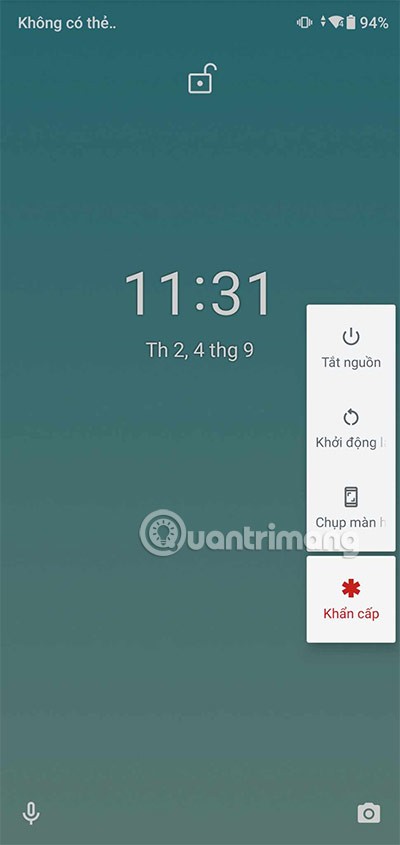
Additionally, if you have voice control enabled, your phone's digital assistant can take a screenshot if you ask it to. For example, say “Hey Google, take a screenshot” and the assistant will do so.
2.1. Devices with physical Home button
For many high-end Samsung phones that have a physical Home button, you can press the Home button and the Power button , or most of the time the Power button and the Volume Down button, to take a screenshot. You just need to press these two buttons at the same time to take a screenshot of your Samsung phone. The capture method can vary, such as pressing and holding, or pressing and releasing at the same time.

2.2. Devices with S Pen

On devices like the Samsung Galaxy Note or Samsung Galaxy Ultra (S22 and above), you can use the S Pen to take screenshots.
On Samsung devices with an S Pen (like the Galaxy Note), you can use the S Pen to take a screenshot. Just hold down the S Pen button and touch the tip of the pen to the screen until you take a screenshot.
Once you take a screenshot, it will open for you to edit. Remember to save your image after editing.
Step by step instructions:
Method 1: Using Air Command
Method 2: Using gestures

To take a screenshot on a Xiaomi phone using physical keys, do the following:
Note:
The screenshot will be saved in your photo library, in an album called Screenshots .

Similar to Xiaomi smartphones, you can also take screenshots on Oppo phones using physical keys. Just press the power button and the volume down button at the same time, the screen will flash and your screenshot will be saved to the photo library afterwards. Note that you can apply this method to all Oppo smartphones.
The same goes for Huawei screenshots, you just need to press and hold the volume down key at the same time as the power key to save the screenshot. With some Huawei smartphone models, you just need to press the two keys at the same time without holding down to save your screenshot on your Huawei phone.
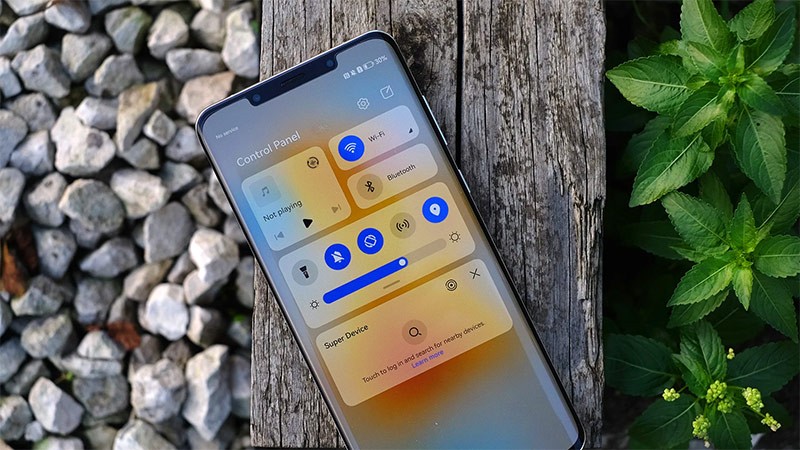
Realme also, you select the screen or application you want to screenshot. Then use the Power and Volume Down buttons for a few seconds. The screen will automatically capture and save the image to your Screenshots or Photos folder.

Method 1: Using Hardware Keys:
Method 2: Using the Slide Capture Feature:
Method 3: Using the Screenshot Icon in the Notification Bar:
After taking a screenshot, you can find the image in the Pictures or Captured Screen folder, depending on the default settings of your Vivo phone.

You can take a screenshot on your Android device hands-free by asking Google Assistant to do it for you. Just say "Hey Google" to activate Assistant, then say "Take a screenshot" to take a shot. This is useful when you're cooking or eating while watching YouTube.
If you're trying to take a screenshot on a Samsung phone, you might prefer using Bixby over Google Assistant. Some users have complained that Google Assistant doesn't save screenshots to the gallery on Samsung phones and instead just lets you share them right away; Bixby doesn't have this problem.
If none of the methods seem to work on your device, your last resort is to download a third-party app through the Play Store. Their basic functionality will be the same as the default method, but sometimes third-party apps offer some cool extra features that aren’t available.
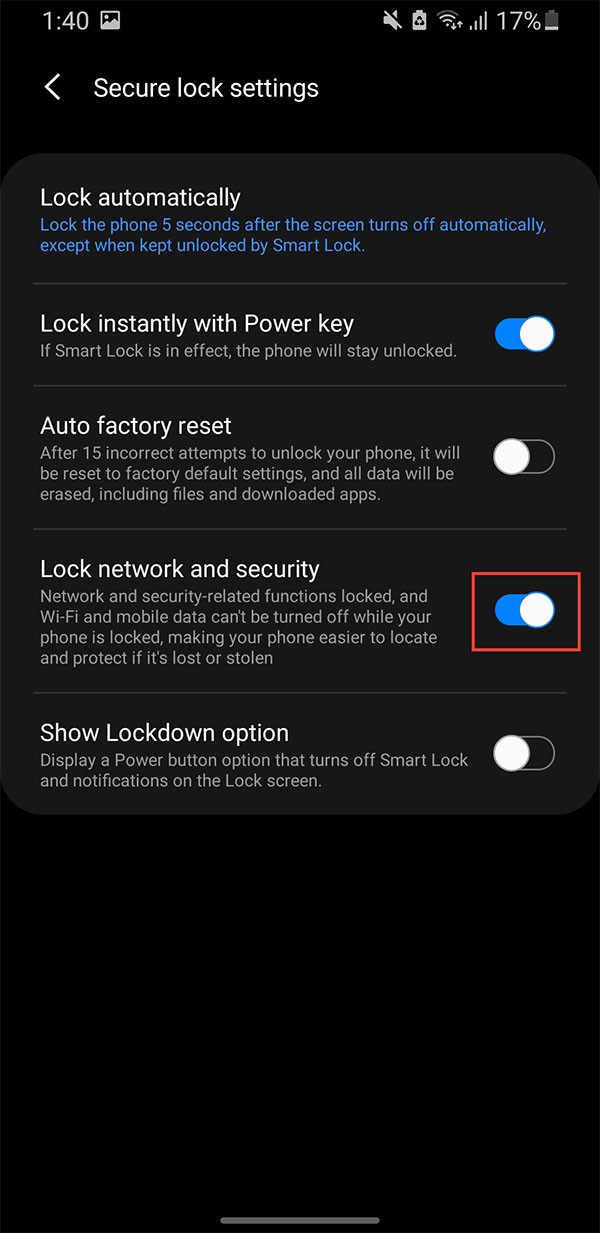

One such app is Screenshot Easy, which allows taking screenshots using the screen overlay button, the notification bar button, by shaking the device, or via widget.
There are also some great post-capture options. You can crop screenshots, convert them to ZIP files, edit colors, and include time and date stamps. You can save images in PNG or JPG format. The app also has screen recording capabilities, including support for scrolling screenshots.
As long as you're running a fairly recent version of Android, your device can take screenshots without a third-party app, but you might still want to consider installing one if you're running an older version. For most people, however, the fastest way to take a screenshot on Android is to use your device's physical buttons.
Perhaps there is no need to say more about the necessity of the screenshot feature on electronic devices in general and smartphones in particular. It allows you to save all content that appears on the screen as an image for storage and use when necessary.
Because of this importance, a malfunction of the screenshot feature can be a big inconvenience, although it rarely happens. In such situations, what should you do? Try some of the measures below.

When the screenshot function on your Android phone or tablet is not working, it may happen in the following situations:
This problem can come in many forms, but it’s generally caused by software issues. For example, if your phone was issued by an organization, it may have certain restrictions, such as not allowing screenshots. Another cause is Chrome’s Incognito Mode, which doesn’t allow screenshots.
Additionally, the problem could also be caused by hardware factors such as a broken button or low memory.
As mentioned, there are many causes for this problem, so the solution should be applied flexibly. You can try some of the following measures:
See more articles below:
Good luck!
Are you bored with static wallpapers on your phone? Try this method of turning videos into beautiful wallpapers for Android.
The lock screen on your phone or tablet is a tool designed to prevent strangers from accessing your device. Because of this importance, setting up the lock screen in the safest and most reasonable way is something every user should do. The article below summarizes 4 things you should apply to the lock screen on Android and iOS to master the above feature and protect your device from unauthorized access.
Developer options on Android devices are hidden by default, to avoid changes that affect the system. The following article will guide readers on how to enable developer mode on Android, illustrated on the Samsung Galaxy S9, and how to disable this option if you no longer use it.
Smartphones and tablets can easily fill up with storage, especially if you've been using them for a while. Here are some ways to free up space on your Android device.
Deleting apps you know you won't use is a great way to save storage space and minimize background processes on your phone.
It's easy to think of screenshots as temporary, but many of us never delete them. The danger is that some of them can become gold mines for hackers, identity thieves, or even just curious friends.
Many people think that their Samsung phone battery can no longer meet the daily needs. But after turning off these overlooked settings, the battery can easily last all day.
Current web browsers on computers or phones all have the option to delete browsing history, such as deleting browsing history on Chrome, deleting browsing history on Firefox,...
Many people never thought they would leave Stock Android. But after just a week of using this launcher, they now find the original interface bland and restrictive.
Microsoft's new feature makes it easy to open shared files on Android anonymously without having to log in to your account.
Losing your phone is one of the most frustrating experiences you can have. While you may not be able to get your old device back, there are ways to recover your data.
Smartphones have replaced so many other devices. They are so versatile that you probably don't need any of the categories of devices they replace.
With auto click applications. You will not have to do much when playing games, using applications or tasks available on the device.
Notifications are great for staying informed, but they can quickly get out of hand. With so many alerts coming from different apps, checking the notification center can feel like wading through a sea of information.
Many people never expected the weakest camera on their phone to become a secret weapon for creative photography.
Are you bored with static wallpapers on your phone? Try this method of turning videos into beautiful wallpapers for Android.
The lock screen on your phone or tablet is a tool designed to prevent strangers from accessing your device. Because of this importance, setting up the lock screen in the safest and most reasonable way is something every user should do. The article below summarizes 4 things you should apply to the lock screen on Android and iOS to master the above feature and protect your device from unauthorized access.
Today's technological developments can allow you to directly extract text from images captured with a smartphone camera.
As soon as you update your iPhone to the official iOS 16 version, you will be able to set an iPhone wallpaper without covering your face when adjusting the wallpaper according to the depth effect.
While Apple's Photos app is useful for basic tasks like cropping photos, it doesn't offer many advanced editing features. And that's where a third-party photo editor comes in handy.
Developer options on Android devices are hidden by default, to avoid changes that affect the system. The following article will guide readers on how to enable developer mode on Android, illustrated on the Samsung Galaxy S9, and how to disable this option if you no longer use it.
Smartphones and tablets can easily fill up with storage, especially if you've been using them for a while. Here are some ways to free up space on your Android device.
Deleting apps you know you won't use is a great way to save storage space and minimize background processes on your phone.
It's easy to think of screenshots as temporary, but many of us never delete them. The danger is that some of them can become gold mines for hackers, identity thieves, or even just curious friends.
Many people think that their Samsung phone battery can no longer meet the daily needs. But after turning off these overlooked settings, the battery can easily last all day.
Current web browsers on computers or phones all have the option to delete browsing history, such as deleting browsing history on Chrome, deleting browsing history on Firefox,...
You can use iCloud Keychain or iCloud Keychain to save your passwords and easily access them on your iPhone. Here's how to recover deleted passwords on your iPhone.
The Phone app on iPhone when upgraded to iOS 18 has been updated with a call history search feature. Below are instructions for searching call history on iPhone.
The Wallet app on iOS 26 lets you store physical card information alongside your digital payment card. This feature lets you quickly access your account number, expiration date, and other information without having to carry your physical card.
You may have had an iPhone for years, but pairing it with a Mac completely changes the way you use it. There's a whole layer of functionality that only comes to light when the two devices work together.
